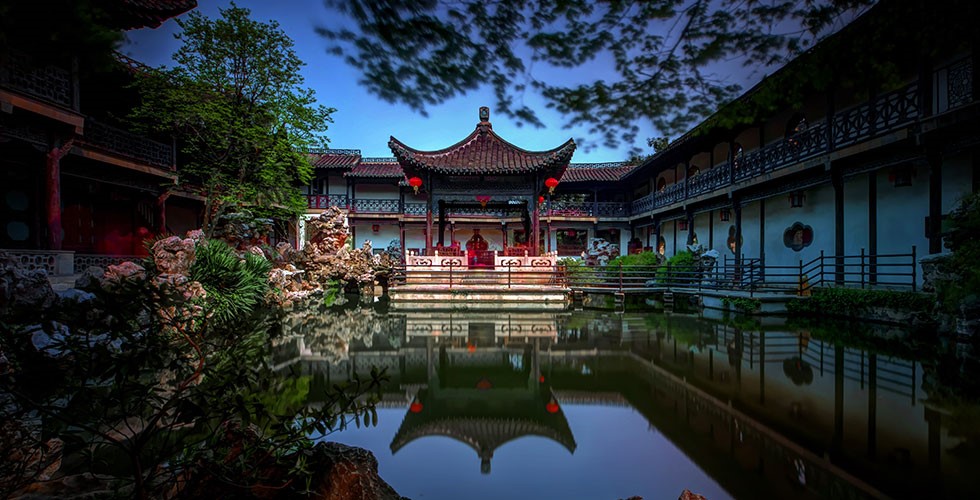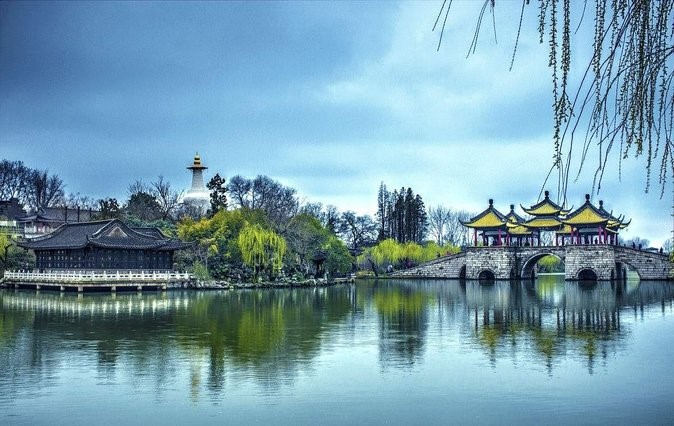
Yangzhou is situated between north latitude 32 11' - 33 25', east longitude 119 - 120 ; at the confluence of the Yangtze River and the Grand Canal; in the south of Jiangsu Province. It is on the north bank of the lower reaches of the lower reaches of the Yangtze River, at the southern end of Jianghuai Plain. Guangling the first settlement in the Yangzhou area, was founded in the Spring and Autumn period. After the defeat of Yue by King Fuchai of Wu, a garrison city was built 12 m (39 ft) above the water level on the north bank of the Yangtze c. 485 BC. This city in the shape of a three by three li square was named Hancheng. The newly built Han canal formed a moat around the south and east sides of the city. The purpose of Hancheng was to protect Suzhou from naval invasion from Qi. In 590, the city began to be called Yangzhou, which was the traditional name of what was the entire southeastern part of China then.
Under Emperor Yang of Sui (r. 604–617), Yangzhou was the southern capital of China. It was called Jiangdu upon the completion of the Grand Canal until the fall of the Sui dynasty. By the mid 610s, a combination of fruitless attempts to conquer the Korean kingdom of Goguryeo, together with natural disasters and provincial unrest, ensured many people Emperor Yang had lost the legitimacy of his monarchy. As revolts spread across China in 616, the Emperor abandoned the North and meanwhile withdrew to Jiangdu, where he remained until his assassination in 618.

Yangzhou is without a doubt a top tourist city in China, with fascinating beauty. With a long history of over two thousand years, the city has accumulated numerous culture assets. It also possesses rich tourist resources such as endless water scenes, tastefully landscaped gardens as well as a varied architecture, in both magnificent and simple delicate styles. The most famous attractions include Slender West Lake, Ge Garden, He Garden and Daming Monastery.